As the Lunar New Year approaches, every household displays a branch of peach blossoms showcasing vibrant pink hues. Throughout Northern Vietnam, we see the pink of peach flowers both indoors and outdoors, in gardens, and along streets. While people know that peach blossoms are essential for the New Year, few truly understand the significance of this flower, which is the most representative of the traditional Tet celebration.
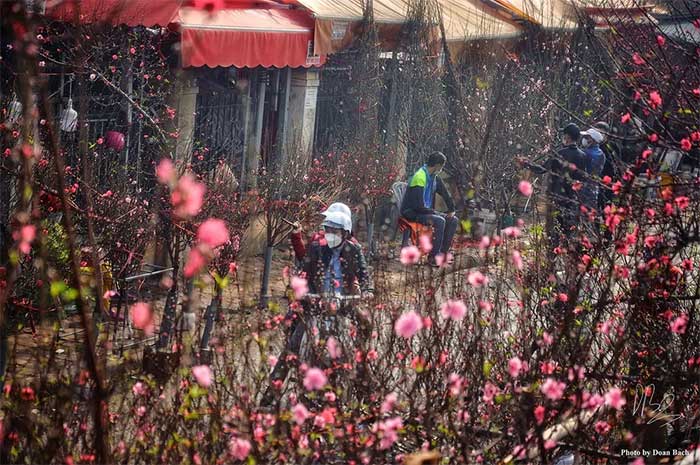
Photo: Doan Bach
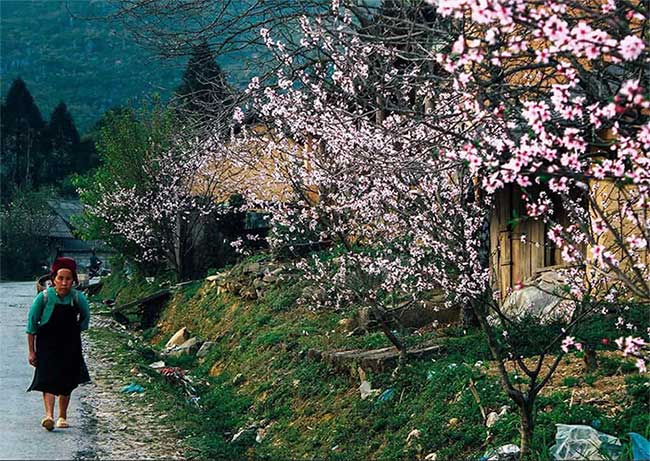
Peach blossoms in the highlands.
As winter gives way to spring, everything enters a new cycle filled with essential characteristics. While the bright yellow apricot pots symbolize a warm and prosperous Tet in the South, the North holds a deep affection for the rich pink of peach blossoms.
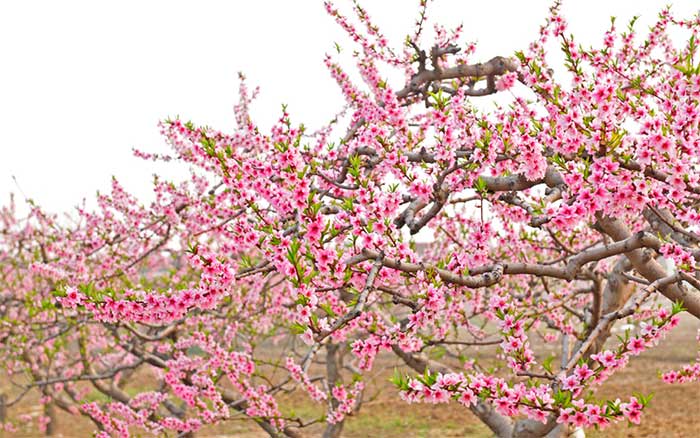
Peach blossoms symbolize Tet.
It’s interesting how seeing peach blossoms immediately evokes the spirit of Tet. Tet in the North happens amidst a mild chill, not the biting cold, and this is when the peach flowers are at their most brilliant. Starting from early December, peach trees are eagerly prepared for sale. By mid-December, fresh buds bravely emerge amidst the shy peach blossoms.
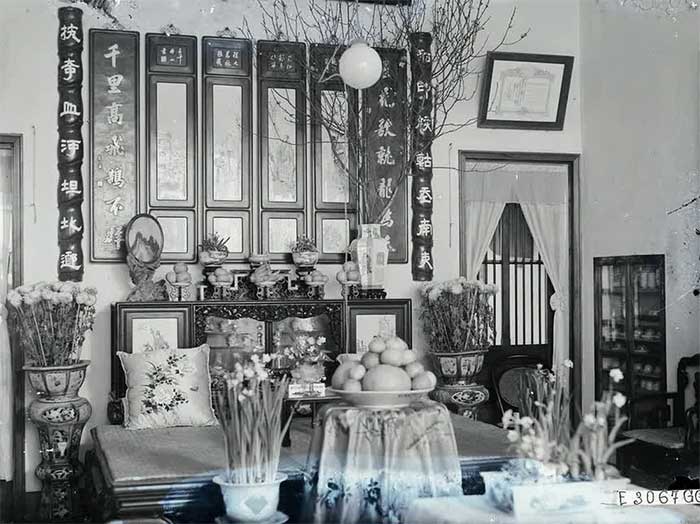
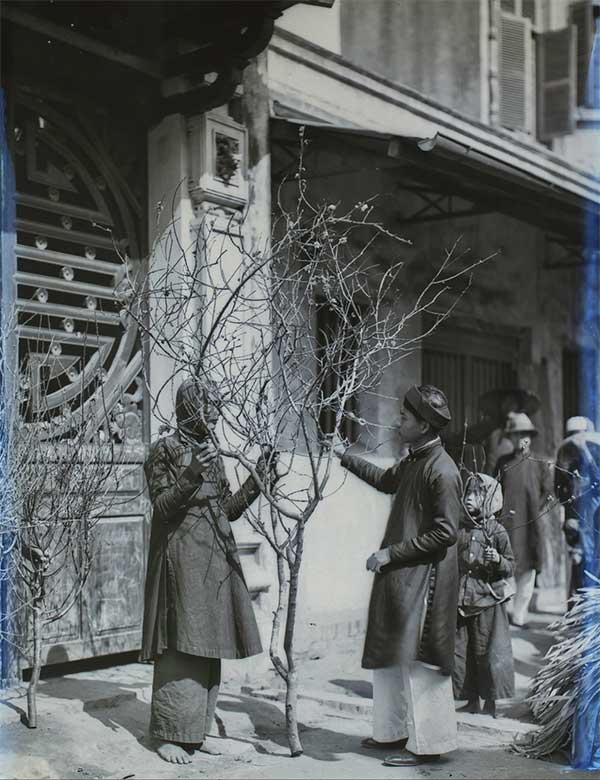
Archive photo: Peach blossoms were essential in old Tet celebrations.
At this time, the peach trees have also started blooming, but peach growers skillfully time the flowers to bloom just before Tet, ensuring they are most radiant during the New Year. The vitality of spring is truly overwhelming at this moment.
Peach Blossoms on Tet – A Symbol of New Beginnings and Prosperity
The custom of displaying peach blossoms during Tet in Northern Vietnam has been around for a long time. Peach blossoms bloom in spring, but for them to bloom at the right time for Tet, flower growers must accumulate extensive experience. In some years, if the weather warms up too early, the blossoms might fully open, and people feel that the Tet spirit is not quite there. Therefore, peach blossoms need to bloom in a slightly chilly atmosphere, opening shyly to fully capture the essence of Tet.
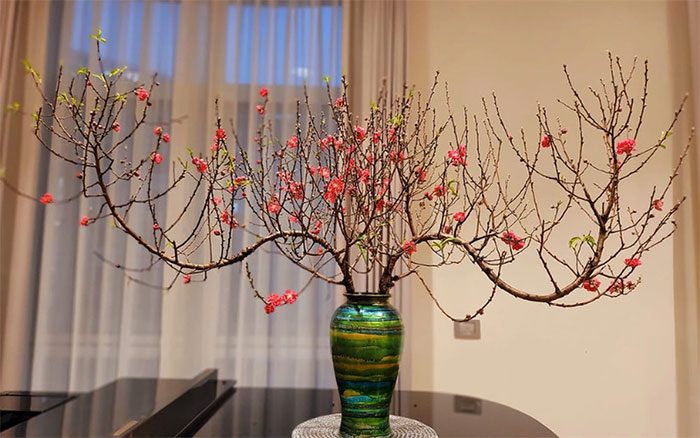
The custom of displaying peach blossoms during Tet has been around for a long time.
As early as the 11th lunar month, people strip the leaves off the peach trees to concentrate the tree’s sap, prompting the buds to form. In warm, humid weather, flowers bloom early, while drier soil delays blooming.
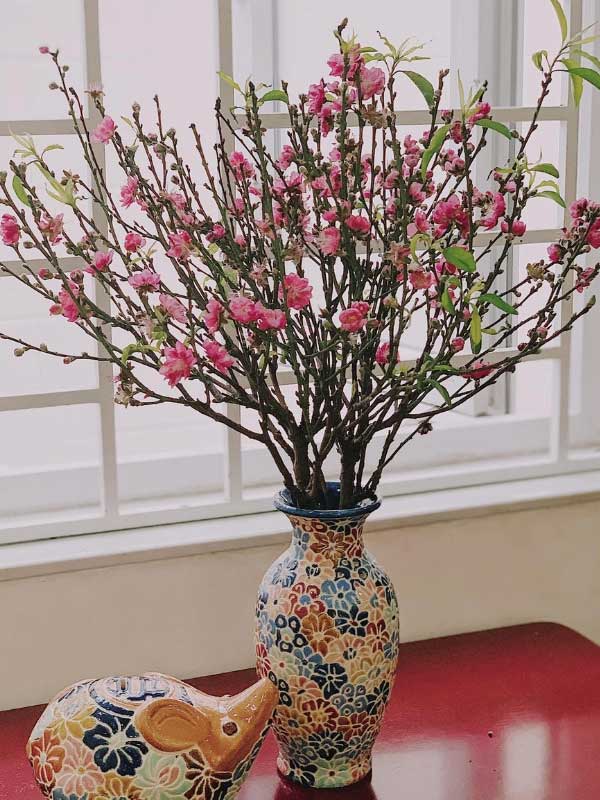
From rural areas to cities, the pink hue of peach blossoms brightens everywhere.
Among various types of flowers displayed during Tet, dahlias, gladiolus, and chrysanthemums are also used, but every home must have at least one peach branch. From rural areas to cities, the pink hue of peach blossoms decorates every corner.
In Vietnam, there are various types of peach blossoms, but the most recognized during the traditional Tet are the pale peach, deep pink peach, and the wild peach varieties from some provinces in the Northwest.
The Significance of Displaying Peach Blossoms on Tet
The slender peach branches sprout fresh green buds, shedding the past year’s regrets and old memories. The pink peach blossoms ignite new joy and hope for a better life in the coming year.
In the book Festivals and Tet Celebrations of the Vietnamese, author Nguyen Van Huyen notes why people enjoy displaying peach blossoms during Tet: “Peach branches, symbols of vitality and longevity, are sold for 25 to 30 dong.”
The reasons for displaying peach blossoms during Tet are also mentioned in the story The Legend of Peach and Apricot Blossoms by authors Chu Linh Hoang and Hieu Minh. Long ago, on the eastern side of Soc Mountain, there stood an ancient peach tree. The tree was unusually lush, casting shade over a wide area. This was the home of two deities named Tra Uat Luy. In those times, evil spirits dared not approach, as they were punished by these two gods. They feared the gods so much that they wouldn’t even harm the peach tree; just seeing the peach blossoms would make them flee.

Peach branches, symbols of vitality and longevity.
At the end of the year, just as the Kitchen Gods ascend to heaven, the two deities residing in the peach tree also go to heaven to report to the Jade Emperor. During Tet, without the protection of these two gods, people would break off peach branches to place in vases. Those unable to do so would draw pictures of the two deities on red paper and paste them on the front post of their homes to ward off evil spirits. Since then, every Tet, people have displayed peach blossoms to protect their homes, seek peace, and ward off misfortune. This tradition continues to this day.
This is one way to explain the significance of peach blossoms during Tet. More practically, aside from the golden yellow of kumquats and the brilliant gold of apricot blossoms, the pink of peach flowers always evokes freshness, joy, and happiness.
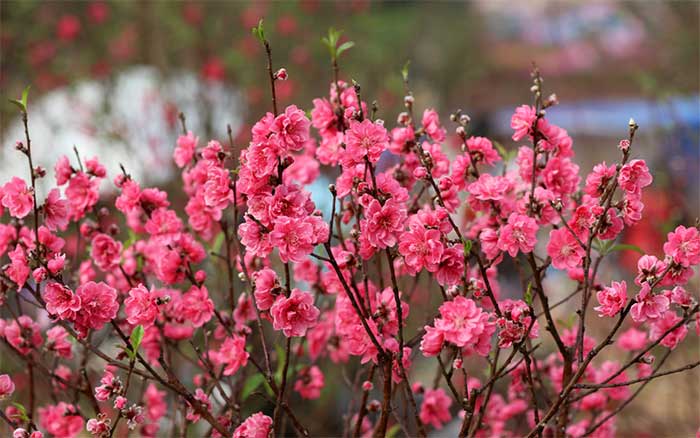
The pink of peach blossoms always evokes freshness, joy, and happiness.
In China, peach blossoms symbolize romantic love and the beauty of women. Additionally, peach blossoms represent renewal and abundance. For the Vietnamese, peach blossoms during the traditional Tet bring warmth; their deep red and pale pink hues symbolize luck and happiness. Furthermore, this spring flower also serves to ward off evil, as mentioned in the legend.
In the new year, everyone hopes for new beginnings, joy, and abundance. The pink of peach blossoms seems to sow in people’s hearts a vitality for good things in the future. Therefore, displaying wild peach branches or arranging peach pots during Tet is a way for everyone to express their wishes for a bright, prosperous, and splendid new year.


















































